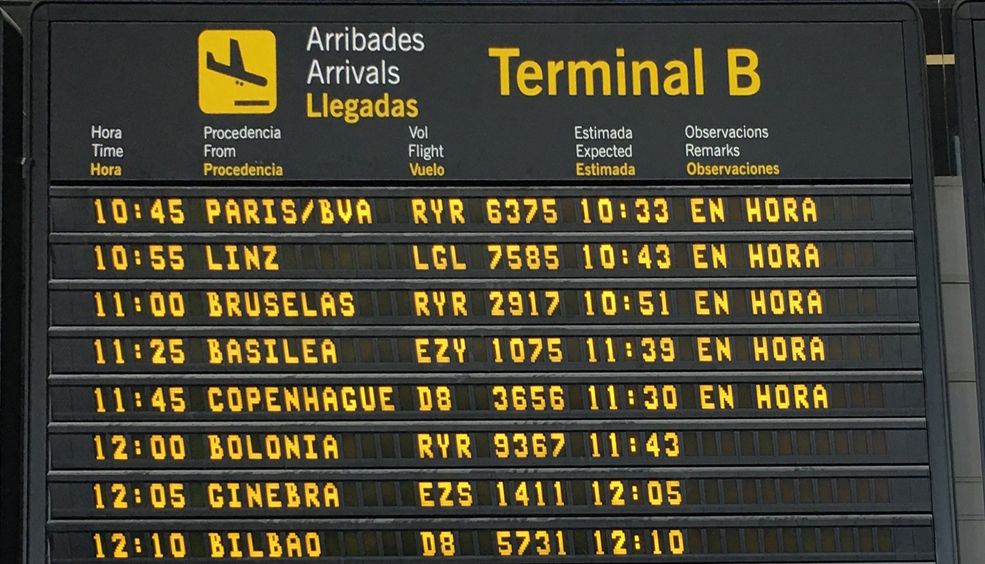Discover Stunning Czech Design
At certain times in the 20th century, Prague took on a leading role as one of the major design production centres in Europe. During the Art Nouveau period, it was among the leaders, together with Vienna, Brussels and Barcelona. Now, the Prague design scene is again emerging on an international level. We went there to take a look at what’s been happening of late.
On our arrival in the capital of the Czech Republic, we decided that the best way of discovering the trends in Czech design over the last few years was to visit The Museum of Decorative Arts, a beacon for enthusiasts of the arts and applied design. However, we found that the museum was closed for renovations and will only re-open to the public in 2017. Instead of feeling disappointed, we took the setback as a more stimulating challenge and set about unearthing less well-known places associated with the past and present of Czech design. Just opposite the Museum stands the Academy of Arts, Architecture and Design, whose students are destined to influence the future course of design, architecture, fashion, jewellery, graphic arts and the fine arts. Apart from presenting the work of its students and graduates, some of the Academy exhibitions are contextualised in terms of references from the past and present.
From Cubism to the Influence of the Brussels School
There are still many sites from that period on display. The Czech Republic – or Czechoslovakia, as it was then known – was a hub of multi-cultural design during the two World Wars. Even prior to World War I, the Czech Cubist movement played a vital role and creators such as Josef Gočár, Pavel Janák and Vlastislav Hofman designed unique works of architecture, furniture and ceramics. The furniture which Jindřich Halabala began to design for the United Arts and Crafts Manufacturing Plant between the wars influenced several generations. For further details of the key players in the design field during the interwar period, there is a publication entitled “Czech 100 Design Icons”. But, we also recommend having a look at the stores Modernista and Kubista, where you will find a wide variety of replicas from that period.
Czech design also came to the fore in the 1950s and 1960s, making itself felt on the international scene, particularly at the Brussels World Fair of 1958, while eight years later its consolidation earned widespread recognition in the film, Czechoslovak New Wave.It was not, however, until democracy was restored in 1989 that the following resurgence of Czech design occurred.
New Age of Splendour – Studios and Shops
Events unfolded apace after the return of democracy to the country. Thus, in the nineties, design flourished in the Czech Republic. A host of stores, designers and architectural and design studios emerged, notably Olgoj Chorchoj, Studio Najbrt and Maxim Velčovský, which continue to play a decisive role. At the same time, the design world continues to be augmented by young, upcoming talent provided by the Academy of Arts, Architecture and Design, which organises the Great Design Prizes competition each year.
On the contrary, fashion designers have been late in catching the wave. While in the nineties and the early years of this century they were practically nowhere to be seen, nowadays there are some stores of note. These are Timur et Grupo, Sister Conspiracy, Hana Havelková, Klára Nademlýnská, Denisa Nová and Liběna Rochová, to name but a few.
Design Markets
The 17th international Designblok exhibition, with “Freedom” as the theme, will take place in October this year. The event is aimed at both the professional sector and the public at large and will be given over to design from a broad perspective, ranging from fashion to furniture design, to jewellery, home accessories, product design, lighting, etc. Also to be featured there are installations of a character halfway between design and the plastic arts.
While Designblok holds its presentations in upmarket establishments, the Dyzajn market focuses on the sale of original creations. Here, the leitmotif is the open-air format. But, if you’d like to see it, you’ll have to wait until next year, as it is held on the first two days of August. This year’s location was Střelecký Ostrov. Lastly, the next DesignSUPERMARKET is scheduled for this December and will be hosted in Kafka’s House. These three events provide an opportunity to see the exhibitions and also to make design purchases.
Prague design is waiting to be discovered. Check out our flights here.
Text by ISABELYLUIS Comunicación
Images by Wendy, Kubista, Academia de las Artes, Arquitectura y Diseño de Praga, Museo de Artes Decorativas de Praga
more infoWhy is it better to travel in autumn? 6 reasons to get away
Golden leaves on the trees, sunsets, chestnuts... many things come to mind when we hear the word "autumn". Summer is long gone and it seems like all that is left to do now is stay at home and wrap up warm. Hold on a minute! Stay at home, you say? Not necessarily! Travelling in autumn has become the best option for many reasons. Not convinced? Here are a few of them:
more infoIATA code: 3 letters so you don't get lost
BCN, CDG, VIE, LGW.... All frequent flyers (and regular players of Trivial Pursuit) know what these three letters mean. They are IATA codes, in other words, the three letters that identify every single airport in the world.
more infoThe Modernist Side of A Coruña
Modernism emerged in the late-19th and early-20th century, marking a break in style with the past, in line with the prevailing cosmopolitan, entrepreneurial mindset of the moment.
In 1883, the city needed to expand, leading to the construction of its famous Ensanche district,which spans the present-day streets of Juana de Vega,Picavia,Feijoo, Plaza de Lugo and Plaza de Pontevedra.
With the wealth they had acquired from foreign trade, the local bourgeoisie commissioned luxury residences in this new area, modelled on those of Vienna, Paris, Prague, Budapest and Berlin, in an outward show of their prosperity and cultural pursuits. This enabled them to distinguish themselves from the old Corunnan aristocracy, who still lived in the Ciudad Alta and Ciudad Vieja districts in dilapidated mansions with dark rooms, lacking proper ventilation or glazed window balconies, with their backs to the sea and to modernity.
Strictly speaking, Modernism came to the city in 1906 with the arrival of the Cuban architect, Ricardo Boán y Callejas, and the Corunnan architect ,Antonio López Hernández, who brought the new trends in building design from Austria, Switzerland and Germany. They also brought journals, catalogues and photos from those countries featuring designs by the Austrian, Otto Wagner, and the Belgian, Victor Horta.
One of the most striking features of these houses are the female faces adorning some of the buildings that are still standing. They were mostly inspired by the countenance of an English lady, Elizabeth Siddal, the wife of the Pre-Raphaelite painter, Dante Gabriel Rossetti. She was immortalised in the guise of her languid, enigmatic beauty and her long tresses following her death from an overdose of laudanum, a mixture of opium and alcohol.
Modernism in A Coruña was influenced by the ornamental style of the English architect, Owen Jones (1808-1874). Local artists decorated the facades and doorways with irises, horse-chestnut leaves, water plants, roses and camellias in multi-coloured garlands which seem to reach out to the passer-by and lavish pleasure on the senses.
Galleries are awash with the Mackintosh Rose motif of Charles Rennie Mackintosh, as well as twirling, sap-bearing plant stems. The transparent glass surfaces spread out among them like dragonfly wings. However, Japanese influences also come to the fore in the form of embossed irises, reeds and butterflies on lilies, star-shaped holly leaves and lotus flowers framing windows and lifts, by way of a country-like, ecological architecture. Enjoy a Modernist route through the city – download the guide here.
Modernist Top 5 in A Coruña
1. Casa Rey (1911)
The work of Julio Galán, his architecture distils the essence of the glass city. The rippling cornice, the Mudéjar inspired glazed ceramics and the wrought iron balconies made in the Wonenburger foundry make it a veritable dolls house for the ladies of those times that adorned its balconies with their head-dresses of gardenias and palm leaves. Chocolate was one of the exotic wares shipped from the Indies and other colonies to the port of A Coruña, and chocolateries dating from that period are still open to the public on the streets of Riego de Agua, Plaza de Lugo and Estrecha de San Andrés. Hence the origin of the popular Corunnan demonym ofcascarilleiros(huskers),an allusion to the cocoa husks which filled the streets with their aroma. Plaza de María Pita, 12.
2. Casa Molina (1915)
Designed by Rafael González Villar. The building was the home of Don Raimundo Molina, a representative of Royal Dutch Lloyd and consul of the Netherlands. He was also the father of the well-known mayor, Don Alfonso Molina. Influenced by the Italian Modernism of Turin, the garlands and draped ribbons of the building form a theatrical final curtain to the Old City. C/ Santiago, 2.
3. Kiosko Alfonso (1912)
Also designed by Rafael González Villar, this is a magnificent example of early-20th-century recreational architecture. With its rectangular floor plan, it operated as a café, music hall and cinema, the central screen of which divided the auditorium into two rooms. In the first room, the audience saw the positive film, while a negative of the film could be viewed at a lower fee from the other. Converted into an exhibition hall in 1982, the original Modernist decoration is still intact, including dragons which surround and immerse the audience in a world of mystery and fantasy. Jardines de Méndez Núñez.
4. Compostela, 8 (1910)
Also the work of Julio Galán Carbajal. The foyer, with access at no. 8 Calle Compostela, is the most striking entrance hall in the city. Walls, ceilings and the archway leading into the lift turn the space into an original stuccowork greenhouse, brimming with intertwined water plants, lotuses, lilies and irises. The lions at the entrance, the eagle and the caryatids on the cornice form a symbolic defence of the house’s residents, reminiscent of ancient Persian palaces.
5. Plaza de Lugo, 13 (1912)
Lastly, this bourgeois residence designed by Antonio López Hernández, linked to the family of the Corunnan actor, Fernando Casado Arambillet (better known as Fernando Rey), features overflowing ornamentation as an outward show of the economic prowess of its residents. It is theatrically adorned with a large garland of roses, leading the eye towards the huge female caryatid dominating the ensemble. The decorative syntax makes this the most beautiful building in A Coruña.
Don’t wait to see these Modernist architectural jewels in A Coruña. Check out our flights here.
more info





